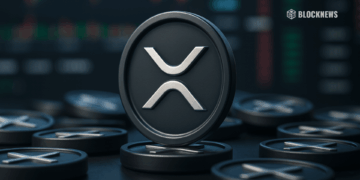- BitMine Immersion faces over $4B in unrealized ETH losses after a 45% market drop.
- Analyst Markus Thielen warns of structural issues, heavy fees, and weak staking yields.
- With the NAV premium gone, shareholders could be “trapped” in a costly, opaque structure.
BitMine Immersion — the largest Ethereum-focused digital asset treasury firm is sitting on more than $4 billion in unrealized losses as ETH’s price collapse exposes what analysts warn are deep structural vulnerabilities. The company, chaired by Fundstrat co-founder Thomas Lee, reported $328 million in fiscal 2025 profit, but critics argue the headline performance masks major long-term risks for investors.

Unrealized Losses Mount as ETH Drops 45%
Ethereum’s steep decline since August has severely damaged BitMine’s balance sheet. With ETH down 45 percent from its peak, BitMine’s massive treasury position has flipped into more than $4 billion in paper losses. The firm’s stock price has followed suit, plunging 84 percent from its July highs and erasing the net-asset-value premium that previously attracted buyers. Analysts say this collapse is already pressuring the company’s core investment thesis.
Analyst Flags Structural Problems Across Digital Asset Treasuries
10x Research founder Markus Thielen issued a blunt warning: BitMine and similar DAT firms may be fundamentally flawed. He highlights that their structures rely on layered entities — asset managers, advisors, and high-paid executives — extracting fees that “quietly erode returns.” In BitMine’s case, he estimates leadership compensation and advisory agreements could siphon off $157 million annually for a decade, regardless of performance. Combined with ETH’s volatility, Thielen believes the setup exposes shareholders to disproportionate risk.

Low Staking Yield Makes ETH Treasury Model Hard to Defend
A major issue is the low yield on ETH staking. The CESR Composite rate currently sits at 2.9 percent, well below U.S. money-market funds offering risk-free returns. Once operational costs and intermediaries are accounted for, Thielen argues BitMine’s effective yield to shareholders becomes “far too low for any serious institutional allocator.” This undermines the purpose of a digital asset treasury model, which depends on yield generation to offset volatility.
The Risk of a “Hotel California” Outcome
Thielen warns that with BitMine’s NAV premium gone, investors may find themselves locked inside an expensive structure with no clean exit — “a true Hotel California scenario.” As ETH prices fall and internal costs rise, shareholders face the possibility of staying trapped in a vehicle that cannot return capital efficiently or compete with traditional income-producing alternatives.














